Volvo XC90 VS Audi Q7 – Specs, Efficiency & Price Comparison
Which model is the better choice – the Volvo XC90 or the Audi Q7? We compare performance (455 HP vs 507 HP), boot capacity (302 L vs 887 L), efficiency (1.20 L vs 1.20 L), and of course, the price (68500 £ vs 69300 £).
Find out now which car fits your needs better!
The Volvo XC90 (SUV) is powered by a Petrol MHEV or Plugin Hybrid engine and comes with a Automatic transmission. In comparison, the Audi Q7 (SUV) features a Diesel MHEV, Plugin Hybrid, Petrol MHEV or Petrol engine and a Automatic gearbox.
When it comes to boot capacity, the Volvo XC90 offers 302 L, while the Audi Q7 provides 887 L – depending on what matters most to you. If you’re looking for more power, you’ll need to decide whether the 455 HP of the Volvo XC90 or the 507 HP of the Audi Q7 suits your needs better.
There are also differences in efficiency: 1.20 L vs 1.20 L. In terms of price, the Volvo XC90 starts at 68500 £, while the Audi Q7 is available from 69300 £.
Compare all the key specs now and find out which model fits your lifestyle best!
The Audi Q7 and the Volvo XC90 both exemplify luxury SUVs with distinct characteristics that cater to different preferences. The Q7 offers a dynamic driving experience with its smooth handling and advanced technology, appealing to those who prioritize performance and connectivity. On the other hand, the XC90 shines with its elegant Scandinavian design and state-of-the-art safety features, making it a top contender for families seeking comfort and peace of mind.
Volvo XC90
The Volvo XC90 stands out with its elegant Scandinavian design, seamlessly blending luxury with versatility. Inside, it offers a spacious and meticulously crafted interior, showcasing high-quality materials and advanced technology. The vehicle provides a comfortable and smooth driving experience, making it a popular choice for families and long journeys.
details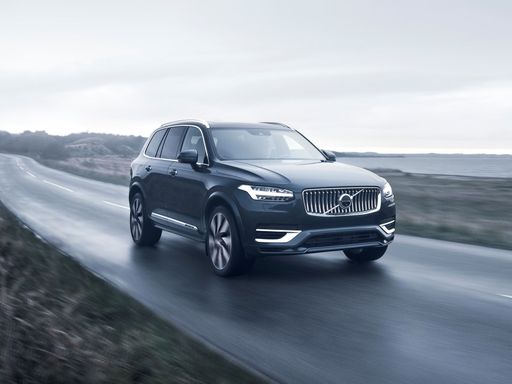 @ media.volvocars.com
@ media.volvocars.com
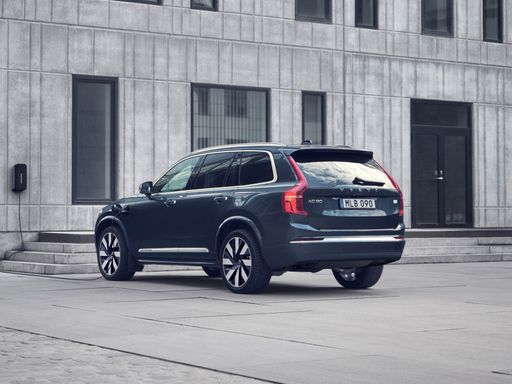 @ media.volvocars.com
@ media.volvocars.com
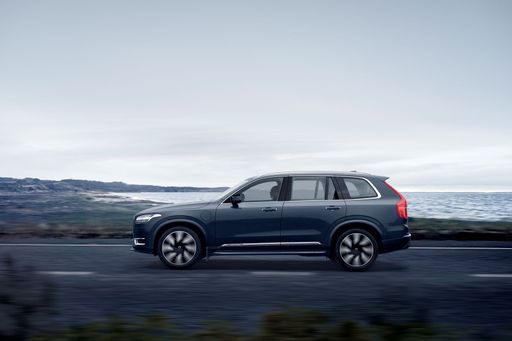 @ media.volvocars.com
@ media.volvocars.com
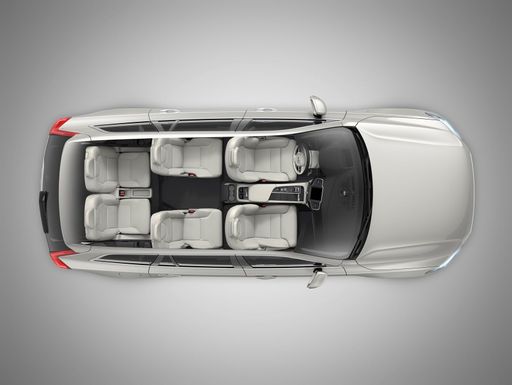 @ media.volvocars.com
@ media.volvocars.com
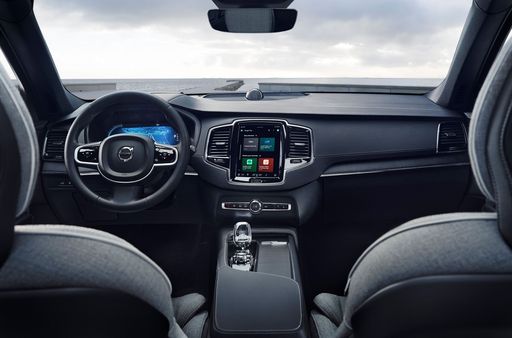 @ media.volvocars.com
@ media.volvocars.com
Audi Q7
The Audi Q7 combines luxurious comfort with impressive versatility, making it a standout choice in the SUV market. Its sophisticated design and meticulous attention to detail create an elegant yet robust presence on the road. With advanced technology and a focus on safety, the Q7 ensures a premium driving experience for both the driver and passengers.
details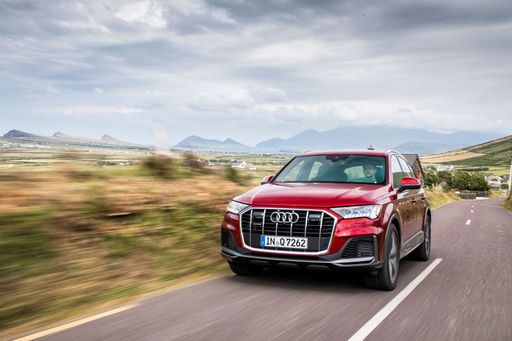 @ audi-mediacenter.com
@ audi-mediacenter.com
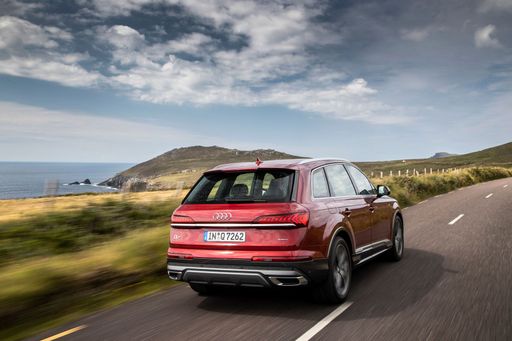 @ audi-mediacenter.com
@ audi-mediacenter.com
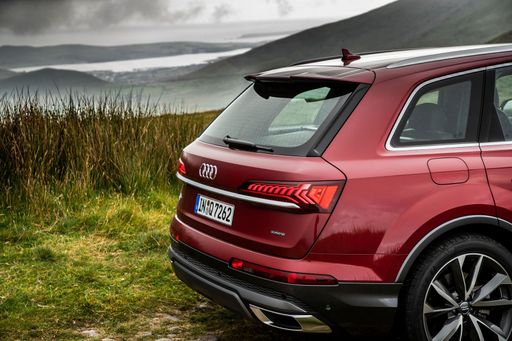 @ audi-mediacenter.com
@ audi-mediacenter.com
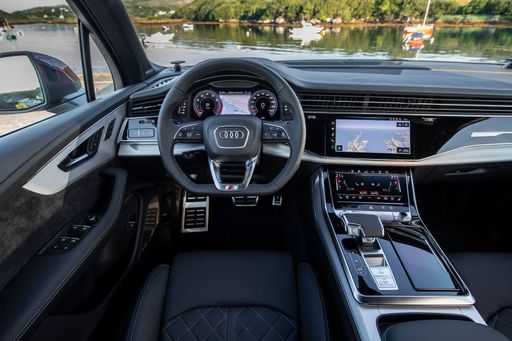 @ audi-mediacenter.com
@ audi-mediacenter.com
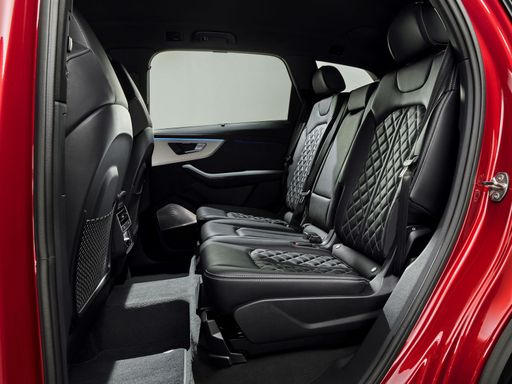 @ audi-mediacenter.com
@ audi-mediacenter.com
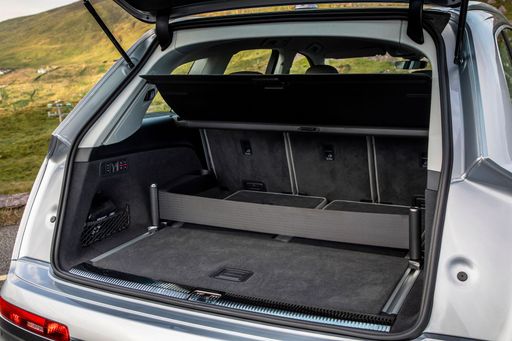 @ audi-mediacenter.com
@ audi-mediacenter.com
Showdown of Titans: Audi Q7 vs. Volvo XC90
In the world of luxury SUVs, the Audi Q7 and Volvo XC90 are often seen at the forefront, each offering a blend of sophistication, safety, performance, and technological innovation. Both models have seen updates in their 2024 versions, strengthening their acclaims in the market. Let’s dive into a detailed comparison of these automotive marvels.
Power and Performance
The Audi Q7 offers an array of powertrains, including Diesel MHEV, Plug-in Hybrid, Petrol MHEV, and Petrol options. The horsepower varies from 231 to a robust 507 HP, with a top speed stretching up to 250 km/h. The Q7 boasts an impressive acceleration, with its most powerful engine reaching from 0-100 km/h in just 4.1 seconds. Its all-wheel-drive mechanism ensures a stable and responsive driving experience.
On the other hand, the Volvo XC90, available in Petrol MHEV and Plug-in Hybrid variants, offers a maximum of 455 HP and a top speed of 180 km/h. It reaches 0-100 km/h in 5.4 seconds, showcasing its prowess despite a more conservative top speed. This prioritizes efficient, sustainable performance while maintaining a commendable level of power.
Efficiency and Eco-Friendliness
Both SUVs present a commitment to efficiency, but the approach differs. The Audi Q7's consumption spans from 1.2 L/100 km in its hybrid variant to 12 L/100 km in the petrol version, promising versatility. Beyond that, its plug-in hybrid model flaunts an electric range of up to 84 km with a 22 kWh battery, highlighting Audi's advance into sustainable luxury.
Volvo's XC90 offers an efficient 1.2 L/100 km consumption in its hybrid form, with an electric range of 71 km supported by a 14.7 kWh battery. The brand’s dedication to reducing its carbon footprint is emphasized with a CO2 efficiency class of B, similar to Audi's efforts with equivalent classifications.
Design and Dimensions
The Audi Q7 is designed with precision, measuring 5072 mm in length, 1970 mm in width, and a height between 1703 to 1735 mm, depending on the variant. The interior is spacious, allowing for configurations between 5 and 7 seats, making it versatile for families or those needing additional cargo space—amplified by a maximum trunk capacity of 887 liters.
Conversely, the Volvo XC90 brings the Scandinavian design ethos to the fore. At 4953 mm long, 1923 mm wide, and 1771 mm high, it provides grandeur without excess. It comfortably seats 7, with trunk space adaptable up to 302 liters, catering primarily to passengers with a smaller focus on luggage.
Technology and Safety Innovations
Both models are suffused with cutting-edge technology, ensuring safety and convenience. The Audi Q7 features advanced driver-assist systems, integrated into a digitalized cockpit offering a seamless user experience with its MMI touch response displays.
Volvo, synonymous with safety, imbues the XC90 with state-of-the-art safety features, including collision avoidance technology and Pilot Assist semi-autonomous driving. The infotainment system is efficiently organized for ease of use, reflecting the clean, functional Volvo design.
Conclusion
In the ultimate analysis, the choice between the Audi Q7 and Volvo XC90 depends on individual preferences. The Q7 dazzles with its expansive engine line-up and impressive performance metrics, appealing to those who prioritize power and space. Meanwhile, the XC90, with its emphasis on eco-friendly driving and top-tier safety features, caters to those who value sustainability and security. Both contenders uphold their brand values, promising an unparalleled luxury driving experience, ensuring either choice is a step towards exhilaration and comfort.

|

|
|
|
|
Costs and Consumption |
|
|---|---|
|
Price
68500 - 81300 £
|
Price
69300 - 99000 £
|
|
Consumption L/100km
1.2 - 8.5 L
|
Consumption L/100km
1.2 - 12 L
|
|
Consumption kWh/100km
-
|
Consumption kWh/100km
-
|
|
Electric Range
71 km
|
Electric Range
83 - 84 km
|
|
Battery Capacity
14.70 kWh
|
Battery Capacity
22 kWh
|
|
co2
30 - 191 g/km
|
co2
28 - 272 g/km
|
|
Fuel tank capacity
71 L
|
Fuel tank capacity
75 - 85 L
|
Dimensions and Body |
|
|---|---|
|
Body Type
SUV
|
Body Type
SUV
|
|
Seats
7
|
Seats
5 - 7
|
|
Doors
5
|
Doors
5
|
|
Curb weight
2080 - 2297 kg
|
Curb weight
2055 - 2460 kg
|
|
Trunk capacity
262 - 302 L
|
Trunk capacity
563 - 887 L
|
|
Length
4953 mm
|
Length
5072 mm
|
|
Width
1923 mm
|
Width
1970 mm
|
|
Height
1771 mm
|
Height
1703 - 1735 mm
|
|
Payload
653 - 710 kg
|
Payload
640 - 885 kg
|
Engine and Performance |
|
|---|---|
|
Engine Type
Petrol MHEV, Plugin Hybrid
|
Engine Type
Diesel MHEV, Plugin Hybrid, Petrol MHEV, Petrol
|
|
Transmission
Automatic
|
Transmission
Automatic
|
|
Transmission Detail
Automatikgetriebe
|
Transmission Detail
Automatikgetriebe
|
|
Drive Type
All-Wheel Drive
|
Drive Type
All-Wheel Drive
|
|
Power HP
250 - 455 HP
|
Power HP
231 - 507 HP
|
|
Acceleration 0-100km/h
5.4 - 7.7 s
|
Acceleration 0-100km/h
4.1 - 7.1 s
|
|
Max Speed
180 km/h
|
Max Speed
226 - 250 km/h
|
|
Torque
360 - 709 Nm
|
Torque
500 - 770 Nm
|
|
Number of Cylinders
4
|
Number of Cylinders
6 - 8
|
|
Power kW
184 - 335 kW
|
Power kW
170 - 373 kW
|
|
Engine capacity
1969 cm3
|
Engine capacity
2967 - 3996 cm3
|
General |
|
|---|---|
|
Model Year
2024
|
Model Year
2024
|
|
CO2 Efficiency Class
G, B
|
CO2 Efficiency Class
G, B
|
|
Brand
Volvo
|
Brand
Audi
|
Volvo XC90
Introduction to the Volvo XC90: The Pinnacle of Swedish Innovation
The Volvo XC90 continues to uphold the Swedish car manufacturer’s reputation for delivering sophisticated and reliable vehicles. Known for its impressive blend of luxury, technology, and safety, the 2024 model year introduces updates that maintain its status as a leading luxury SUV. With options ranging from mild-hybrid to plug-in hybrid variants, the XC90 caters to a diverse array of needs and preferences.
Engine Options and Performance
The Volvo XC90 is available in both petrol mild-hybrid and plug-in hybrid configurations. The mild-hybrid version boasts a robust 250 PS, while the plug-in hybrid variant offers an astounding 455 PS. This range of powertrains ensures that drivers experience both efficient performance and the capability to tackle a variety of driving conditions.
Efficiency and Environmental Responsibility
One of the standout features of the Volvo XC90 is its commitment to environmental efficiency. The plug-in hybrid model achieves a remarkable fuel consumption rate of just 1.2 L/100km and an electric-only range of up to 71 km. These capabilities showcase Volvo’s dedication to reducing carbon emissions and promoting sustainable driving without compromising performance.
Cutting-Edge Safety Features
Volvo cars are synonymous with safety, and the XC90 is no exception. Incorporating advanced safety innovations such as Pilot Assist, City Safety with Autobrake, and Lane Keeping Aid, the XC90 provides drivers with confidence and peace of mind. These systems work together seamlessly to prevent accidents and protect passengers.
Luxurious Interior and Comfort
Step inside the Volvo XC90, and you'll be greeted by a meticulously crafted interior designed for comfort and convenience. The SUV accommodates up to seven passengers with ease, offering a spacious cabin and premium materials. Elegant designs, advanced infotainment technology, and premium sound systems transform every journey into a luxurious experience.
Price and Specifications
The Volvo XC90 is competitively priced, with a range starting from €79,890 up to €94,890, depending on the chosen configuration and features. Its dimensions, with a length of 4953 mm, width of 1923 mm, and height of 1771 mm, provide a substantial presence on the road. The luggage capacity ranges between 262 to 302 litres, allowing for flexibility depending on passenger and cargo needs. Equipped with an automatic transmission and all-wheel drive, the XC90 delivers a smooth and stable ride.
Conclusion: The Epitome of Modern SUV Design
The Volvo XC90 stands out as a top contender in the luxury SUV market, blending advanced technology, unparalleled safety, and luxurious comfort. Whether you choose the fuel-efficient plug-in hybrid or the reliable mild-hybrid version, the XC90 demonstrates Volvo's commitment to innovation and excellence. It remains a favourite among discerning drivers seeking a vehicle that embodies both style and substance.
Audi Q7
Audi Q7: A Benchmark in Automotive Excellence
The Audi Q7 continues to hold its ground as a versatile and luxurious SUV, offering a rich blend of cutting-edge technology, impressive performance, and comfort. With its recent facelift, the Q7 introduces innovative elements that cater to modern-day driving demands. Explore the technical details and unique attributes that make the Audi Q7 a class leader.
Engine Options and Performance
The Audi Q7 is available with a range of engine options designed to suit various needs and preferences. These include Diesel Mild-Hybrid, Plug-in Hybrid, and Petrol Mild-Hybrid configurations. The power output for these engines ranges from 231 to an exhilarating 507 PS, catering to both efficiency seekers and performance enthusiasts. The Audi Q7 can accelerate from 0 to 100 km/h in as little as 4.1 seconds, showcasing its athletic performance.
Innovative Technology Integration
The Audi Q7 integrates the latest technological advancements to enhance the driving experience. The intuitive Audi Virtual Cockpit and a comprehensive infotainment system ensure that the driver remains informed and entertained. The vehicle’s mild-hybrid systems significantly improve fuel efficiency and reduce emissions, highlighting Audi’s commitment to sustainability without sacrificing performance.
Advanced Safety and Driver Assistance
The Q7 is equipped with state-of-the-art safety features and driver assistance systems to ensure peace of mind on the road. Audi Pre Sense, adaptive cruise control, lane-keeping assist, and a 360-degree camera system work seamlessly together to help prevent accidents and enhance the driving experience.
Design and Interior Comfort
With its bold, sophisticated design, the Audi Q7 is both robust and stylish. The SUV offers configurations for five to seven seats, making it adaptable for families and groups. Meticulously crafted materials, adjustable seating, and advanced climate control systems provide a comfortable environment, even on long journeys.
Environmental Efficiency
The Audi Q7’s environmentally conscious engineering includes models with CO2 emissions as low as 28 g/km. For those opting for the Plug-in Hybrid variant, an impressive electric range of up to 84 km ensures emission-free mobility for daily commutes, reinforcing Audi's commitment to a sustainable future.
Conclusion
The Audi Q7 embodies a sophisticated blend of power, technology, and luxury, making it a standout in its class. Whether you’re looking for a spacious family vehicle, a tech-savvy companion, or a robust performance SUV, the Q7 delivers at every front, proving why it remains a popular choice for discerning drivers.
The prices and data displayed are estimates based on German list prices and may vary by country. This information is not legally binding.
